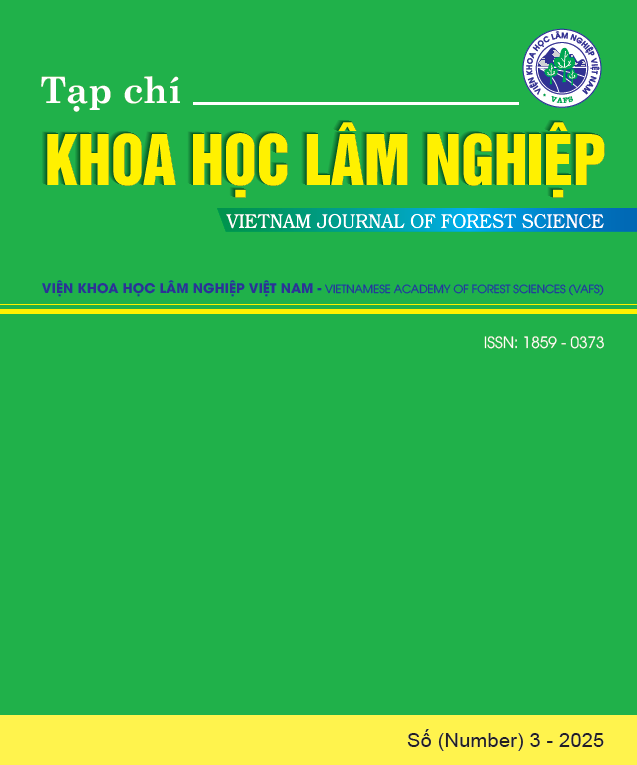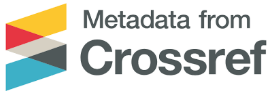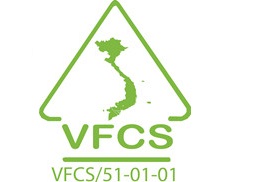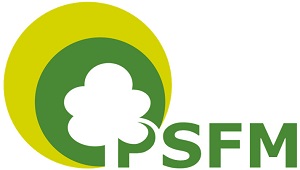SO SÁNH PHƯƠNG PHÁP PHÂN LOẠI THẢM PHỦ SỬ DỤNG ĐẤT BẰNG THUẬT TOÁN RANDOM FOREST SỬ DỤNG CHỈ SỐ NDVI VỚI TỔ HỢP CHỈ SỐ NDVI, DEM, NDWI, NDSI TẠI HUYỆN ĐẮK GLONG VÀ HUYỆN KRÔNG NÔ – TỈNH ĐẮK NÔNG
DOI:
https://doi.org/10.70169/VJFS.1060Từ khóa:
Chỉ số đất chuẩn hóa, chỉ số nước chuẩn hóa, chỉ số thực vật chuẩn hóa, mô hình số độ cao, thảm phủ sử dụng đấtTóm tắt
Nghiên cứu này tập trung đánh giá và so sánh hiệu quả phân loại lớp phủ sử dụng đất bằng thuật toán Random Forest (RF) với hai cách tiếp cận: (i) sử dụng riêng chỉ số thực vật chuẩn hóa (NDVI) và (ii) tích hợp tổ hợp chỉ số NDVI, mô hình số độ cao (DEM), chỉ số nước chuẩn hóa (NDWI) và chỉ số đất chuẩn hóa (NDSI) trên ảnh Landsat tại huyện Đắk Glong và Krông Nô, tỉnh Đắk Nông. Kết quả cho thấy, phương pháp sử dụng riêng NDVI cho độ chính xác tổng thể (OA) thấp, dao động từ 35,89% đến 59,35%, hệ số Kappa (K) chỉ đạt từ 0,24 đến 0,41. Trong khi đó, phương pháp tích hợp nhiều chỉ số đã cải thiện đáng kể hiệu suất mô hình, với OA tăng lên 81,75% - 86,04% và K đạt 0,75 - 0,78. Chênh lệch OA giữa hai phương pháp lên tới 45,86%, còn hệ số K tăng trung bình khoảng 0,40 đơn vị. Việc bổ sung DEM, NDWI và NDSI đã giúp khắc phục hiện tượng trộn phổ và tăng khả năng phân biệt giữa các lớp phủ có đặc tính tương tự. Trên cơ sở đó, nghiên cứu khuyến nghị áp dụng phương pháp tích hợp chỉ số NDVI, DEM, NDWI và NDSI để phân loại lớp phủ sử dụng đất sử dụng ảnh viễn thám, đặc biệt tại các vùng có địa hình phức tạp như Tây Nguyên, nhằm nâng cao độ chính xác và độ tin cậy của sản phẩm bản đồ phục vụ công tác quy hoạch và giám sát tài nguyên đất, rừng bền vững. Kết quả phân tích biến động lớp phủ đất tại huyện Đắk Glong và Krông Nô cho thấy xu hướng suy giảm mạnh diện tích rừng tự nhiên, trong khi rừng trồng có sự gia tăng rõ rệt, phản ánh quá trình chuyển đổi sử dụng đất theo hướng phát triển rừng sản xuất. Đồng thời, diện tích đất trống, đất nông nghiệp và khu dân cư cũng có nhiều biến động do tác động từ phát triển kinh tế - xã hội và nhu cầu sử dụng đất ngày càng tăng.
Tài liệu tham khảo
1. Amani M., Ghorbanian A., Ahmadi S.A., Kakooei M., Moghimi A. & Others, 2020. Google Earth Engine Cloud Computing Platform for Remote Sensing Big Data Applications: A Comprehensive Review. IEEE Journal of Selected Topics in Applied Earth Observations and Remote Sensing, 13, 5326–5350. https://doi.org/10.1109/JSTARS.2020.3021052.
2. Amoakoh A.O., Aplin P., Rodríguez-Veiga P., Moses C., Alonso C.P., Cortés J.A., Delgado-Fernandez I., Kankam S., Mensah J.C., Nortey D.D.N., 2024. Predictive Modelling of Land Cover Changes in the Greater Amanzule Peatlands Using Multi-Source Remote Sensing and Machine Learning Techniques. Remote Sens. 2024, 16, 4013. https://doi.org/10.3390/rs16214013
3. Congalton R.G. & Green K., 1999. Assessing the accuracy of remotely sensed data: Principles and practices. Lewis Publishers. Boca Raton FL.
4. Dongping Ming, Tianning Zhou, Min Wang, Tian Tan, 2016. Land cover classification using random forest with genetic algorithm-based parameter optimization. Journal of Applied Remote Sensing, 10(3). DOI:10.1117/1.JRS.10.035021
5. Eduardo S. N., Fernanda Y. W., Maria L. B. T., Erivaldo A., 2024. Assessing Land Use and Cover Changes arising from the 2022 water crisis in Southeast China: A comparative analysis of Remote Sensing Imagery classifications and Machine Learning algorithms. ISPRS TC III Mid-term Symposium “Beyond the canopy: technologies and applications of remote sensing”, 4–8 November 2024, Belém, Brazil.
6. Elumnoh, A., & Shrestha, R. P., 2000. Application of DEM data to Landsat image classification: Evaluation in a tropical wet-dry landscape of Thailand. Photogrammetric Engineering & Remote Sensing, 66(3), 297–304. Retrieved from https://www.asprs.org/wp-content/uploads/pers/2000journal/march/2000_mar_297-304.pdf
7. Gan Y., Wang Q., Lio A., 2023. Tree Crown Detection and Delineation in a Temperate Deciduous Forest from UAV RGB Imagery Using Deep Learning Approaches: Effects of Spatial Resolution and Species Characteristics. Remote Sens. 2023, 15(3), 778; https://doi.org/10.3390/rs15030778
8. Haas J., 2024. Image processing of Sentinel-1 SAR (S-1) and Sentinel-2 multispectral (MSI) (S-2) data for applications in landscape archaeology. Zenodo. doi.org/10.5281/zenodo.10687538
9. Đoàn Duy Hiếu và Nguyễn Thám, 2017. Đánh giá biến động rừng huyện Ia Pa, tỉnh Gia Lai trên tư liệu viễn thám đa thời gian và GIS, Tạp chí Khoa học và Giáo dục, trường Đại học Sư phạm Huế, 2(42)/2017, tr. 116 – 126.
10. Nguyễn Thị Thanh Hương, 2015. Ứng dụng công nghệ viễn thám trong nghiên cứu và quản lý lâm nghiệp. Tạp chí Khoa học và Công nghệ Việt Nam.
11. Nguyễn Thị Thanh Hương, Nguyễn Đức Định, Phan Thị Hằng, Cao Thị Hoài, Nguyễn Thế Hiển, Đặng Ngọc Trí, Ngô Thế Sơn, Đoàn Minh Trung, Châu Thị Như Quỳnh, Hồ Đình Bảo và Ngô Thị Thùy Phương, 2018. Báo cáo thay đổi sử dụng đất tại tỉnh tỉnh Đắk Nông, giai đoạn 2005 - 2017, Tài liệu Hội thảo tập huấn tại tỉnh Đắk Nông. Đại học Tây Nguyên và Sở NN & PTNT Đắk Nông.
12. Ibrahim S., 2023. Improving Land Use/Cover Classification Accuracy from Random Forest Feature Importance Selection Based on Synergistic Use of Sentinel Data and Digital Elevation Model in Agriculturally Dominated Landscape. Agriculture, 13(1), 98. https://doi.org/10.3390/agriculture13010098
13. Lowe B. and Kulkarni A., 2015. Multispectral Image Analysis Using Random Forest”. International Journal on Soft Computing (IJSC), 6(1), February 2015.
14. McFEETERS S. K., 1996. The use of the Normalized Difference Water Index (NDWI) in the delineation of open water features. International Journal of Remote Sensing, 17(7), 1425–1432. https://doi.org/10.1080/01431169608948714
15. Navulur K., 2006, Multispectral Image Analysis Using the Object-Oriented Paradigm, CRC Press.Senf C., Pflugmacher D., van der Linden S., & Hostert P., 2013. Mapping Rubber Plantations and Natural Forests in Xishuangbanna (Southwest China) Using Multi-Spectral Phenological Metrics from MODIS Time Series. Remote Sensing, 5(6), 2795–2812. https://doi.org/10.3390/rs5062795
16. Pelletier, C., Valero, S., Inglada, J., Champion, N., Dedieu, G., 2016. Assessing the robustness of Random Forests to map land cover with high resolution satellite image time series over large areas, Remote Sensing of Environment, 187(2016): p.156–168
17. Schowengerdt, R.A., 2017. Remote Sensing: Models and Methods for Image Processing. Academic Press.
18. Senf, C., Pflugmacher, D., van der Linden, S., & Hostert, P. (2013). Mapping Rubber Plantations and Natural Forests in Xishuangbanna (Southwest China) Using Multi-Spectral Phenological Metrics from MODIS Time Series. Remote Sensing, 5(6), 2795–2812. https://doi.org/10.3390/rs5062795
19. Ur Rehman A., Ullah S., Shafique M., 2021. Combining Landsat-8 spectral bands with ancillary variables for land cover classification in mountainous terrains of northern Pakistan. J. Mt. Sci. 18, 2388–2401 (2021). https://doi.org/10.1007/s11629-020-6548-7
20. Xu H., 2006. Modification of normalised difference water index (NDWI) to enhance open water features in remotely sensed imagery. International Journal of Remote Sensing, 27(14), 3025–3033. https://doi.org/10.1080/01431160600589179.
21. Yibai Xiong, Yan Ma, Lianguo Ruan, Dan Li, Cheng Lu, Luqi Huang, 2022. The National traditinal chinese medicine medical team (Comparing different machine learning techniques for predicting covid 19 severity, Infectious diseases of poverty, munber 19 (2022).













